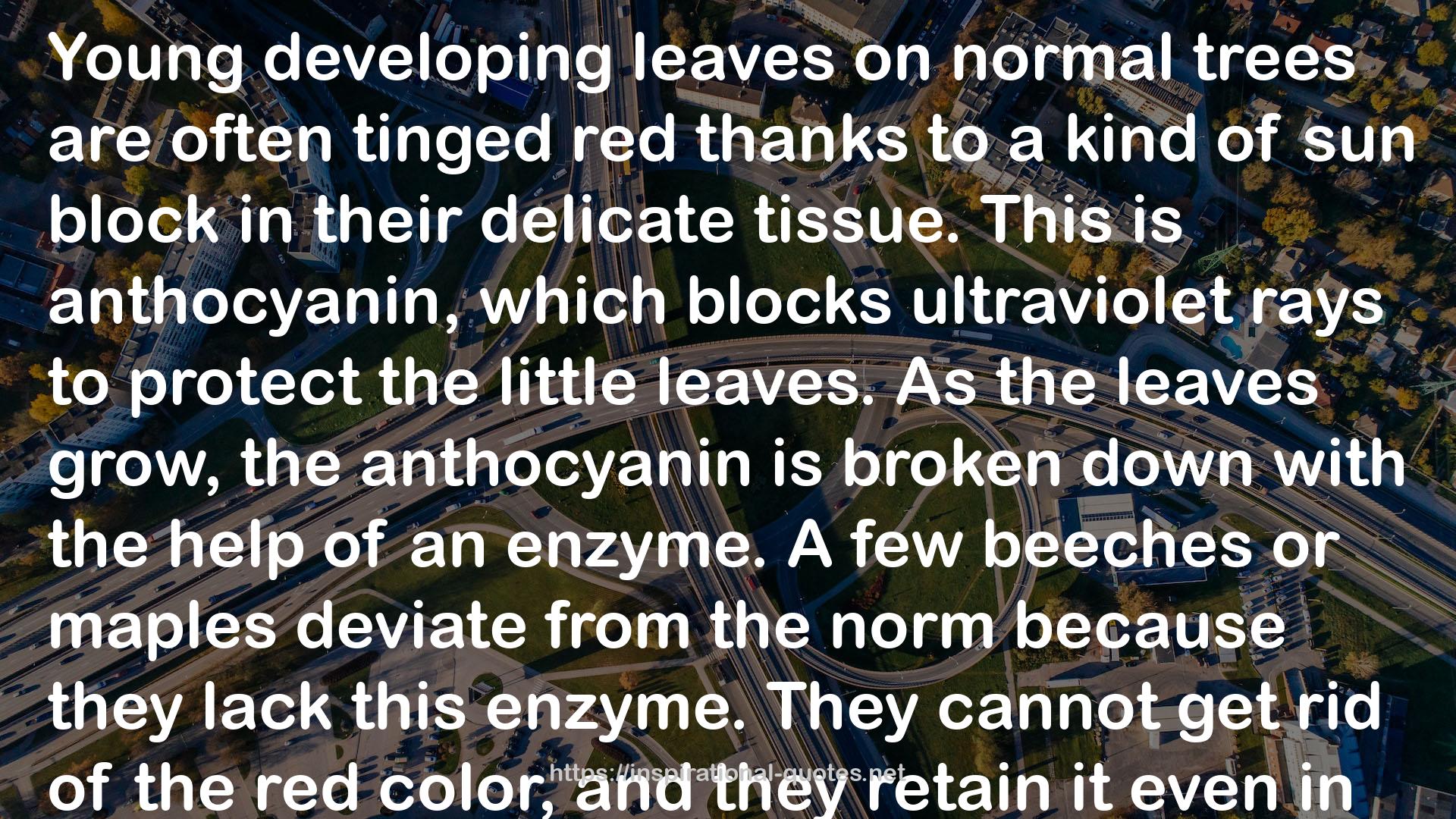" Young developing leaves on normal trees are often tinged red thanks to a kind of sun block in their delicate tissue. This is anthocyanin, which blocks ultraviolet rays to protect the little leaves. As the leaves grow, the anthocyanin is broken down with the help of an enzyme. A few beeches or maples deviate from the norm because they lack this enzyme. They cannot get rid of the red color, and they retain it even in their mature leaves. Therefore, their leaves strongly reflect red light and waste a considerable portion of the light’s energy. Of course, they still have the blue tones in the spectrum for photosynthesis, but they are not achieving the same levels of photosynthesis as their green-leaved relatives. These red trees keep appearing in Nature, but they never get established and always disappear again. Humans, however, love anything that is different, and so we seek out red varieties and propagate them. One man’s trash is another man’s treasure is one way to describe this behavior, which might stop if people knew more about the trees’ circumstances. "
― Peter Wohlleben , The Hidden Life of Trees: What They Feel, How They Communicate: Discoveries from a Secret World
